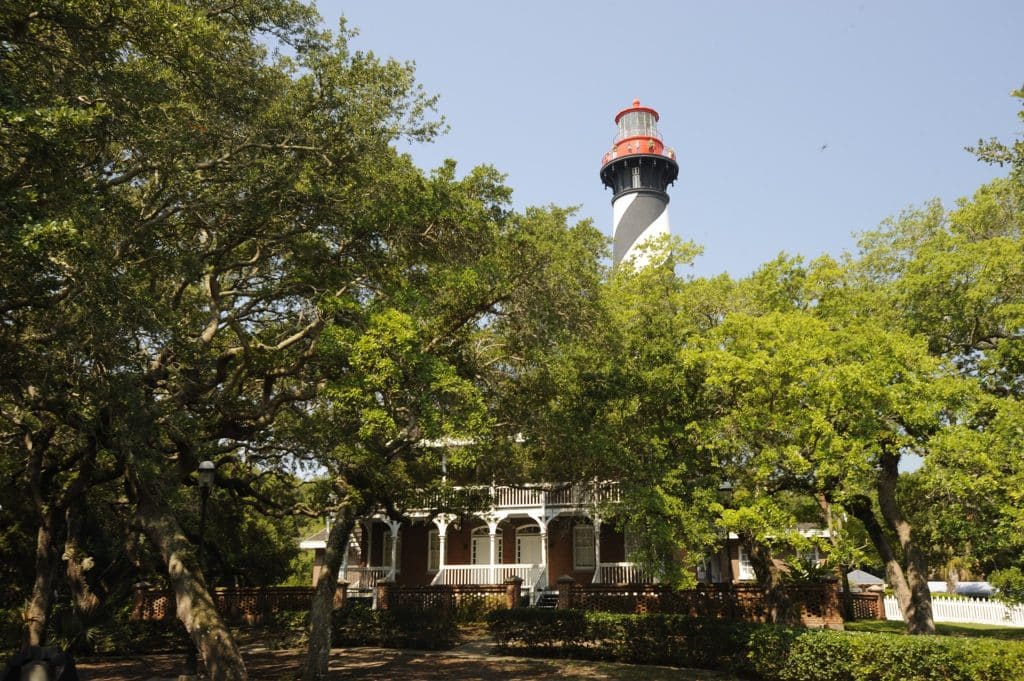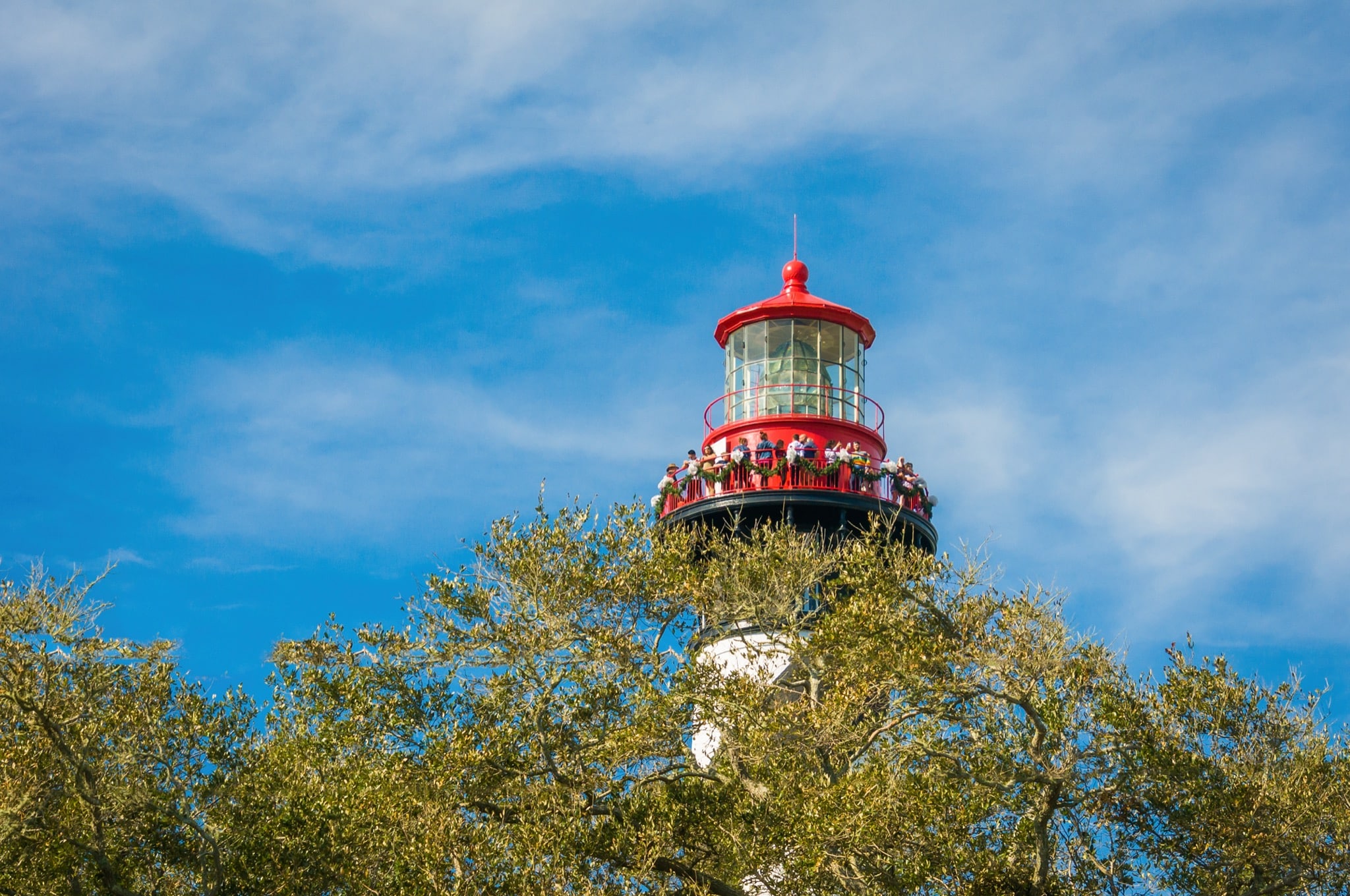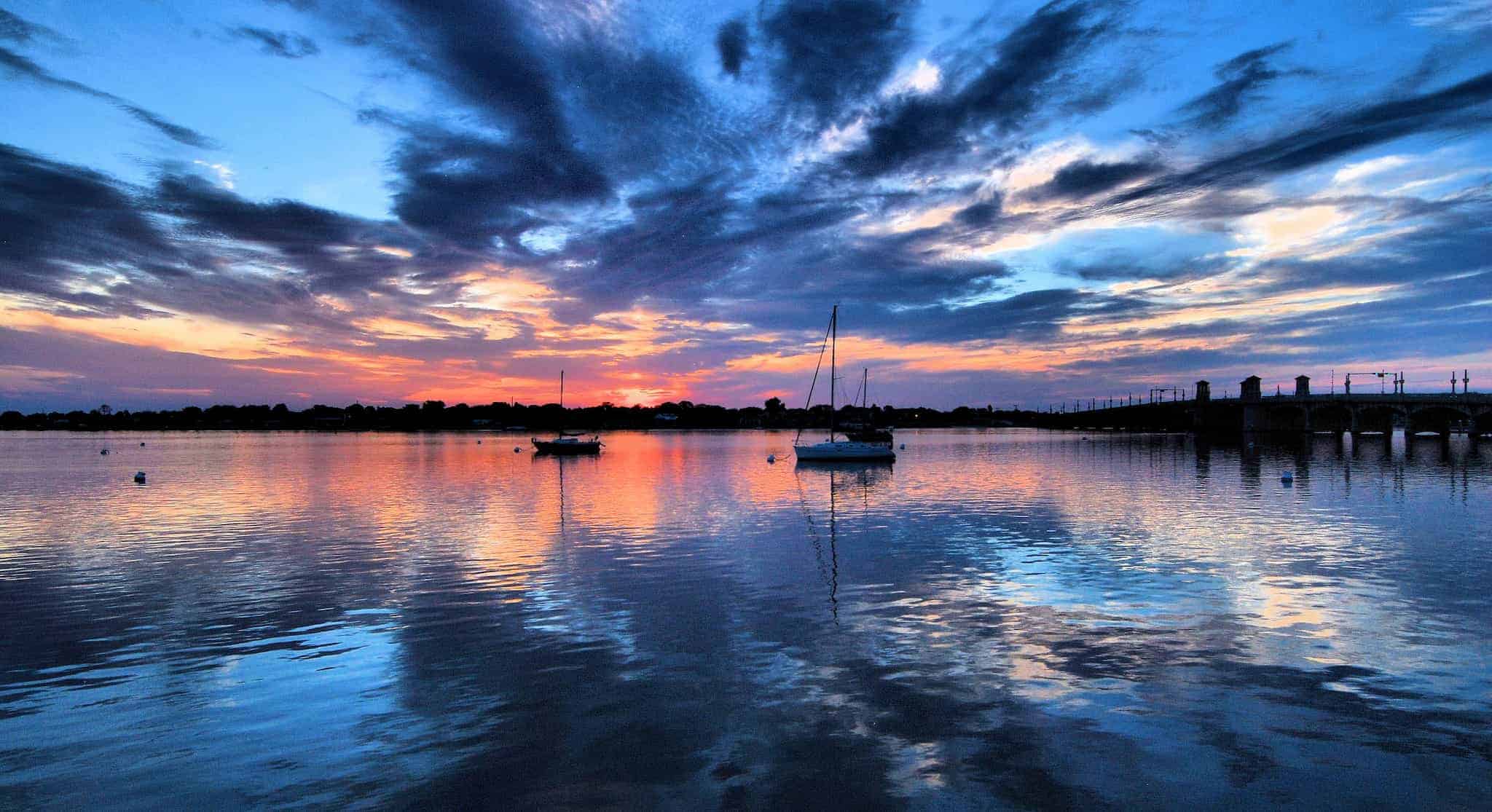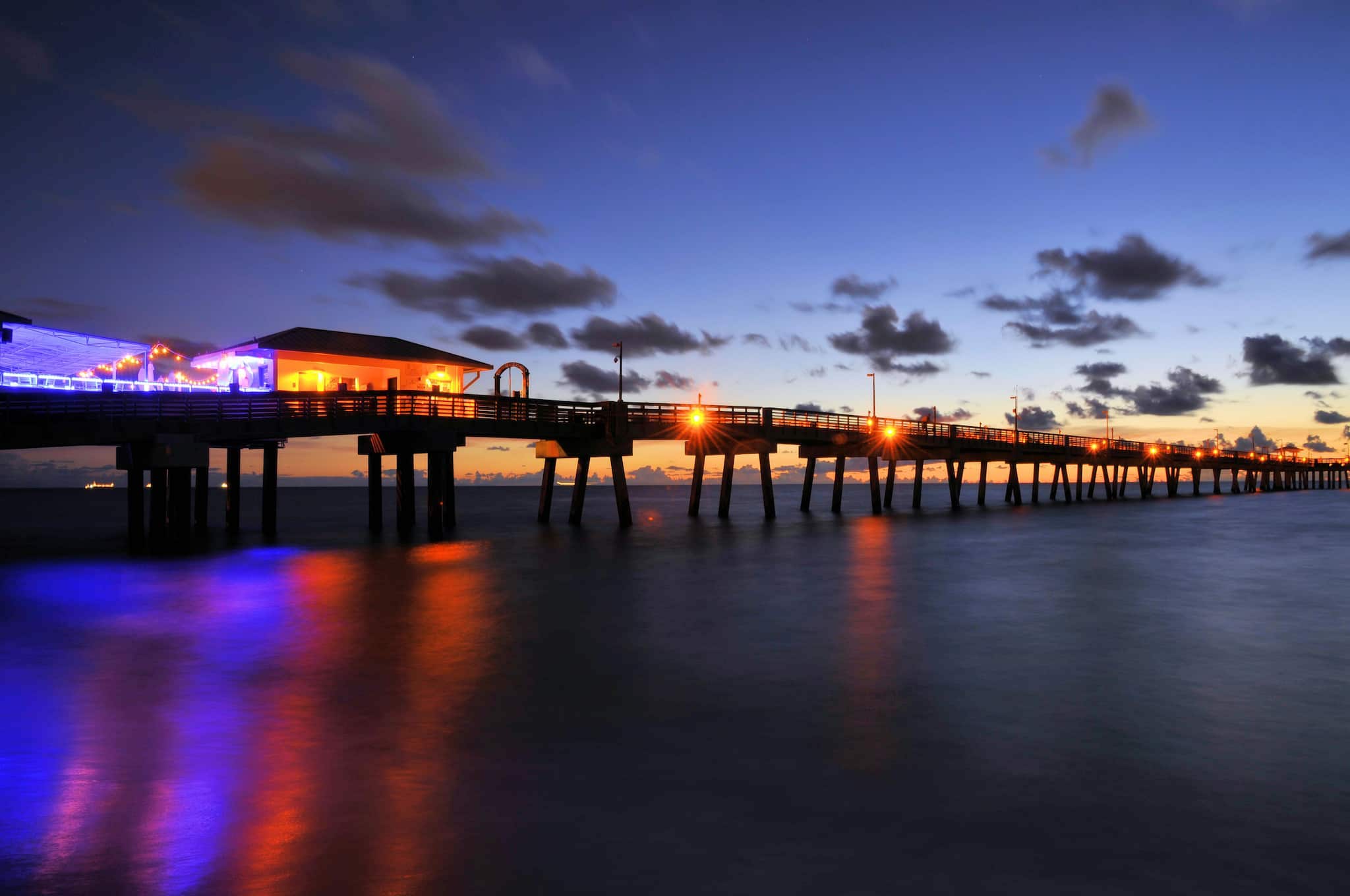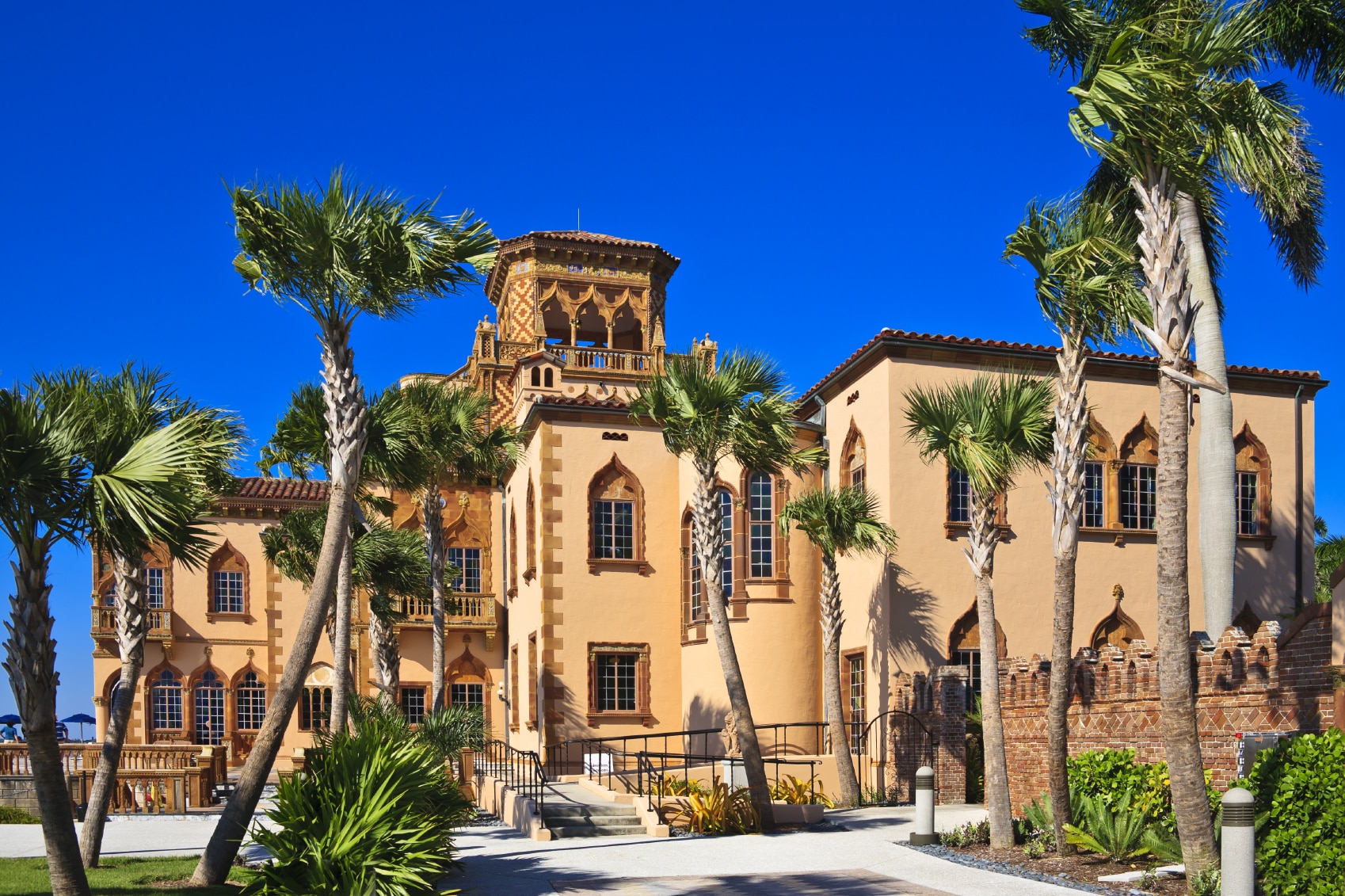Lighthouses appeal to the romantic in all of us, and Florida has its share of these legendary landmarks lining the coasts and waterways. Providing a glimpse into Florida’s maritime history, tales and stories, architectural styles, and picturesque locations, lighthouses are often set along beaches and parks offering a stunning backdrop. These are some of Florida’s most impressive beacons.
Alligator Reef Lighthouse, Islamorada
This spider-legged structure, which dates from 1873, sits atop a reef in the Florida Keys named for the USS Alligator, a Naval Schooner that foundered on the coral shallows. The light sits four miles east of the village of Islamorada and is anchored and bolted directly on the coral reef. No longer under the US Department of the Interior but privately cared for and protected, it is a beloved landmark in Islamorada. It is closed to the public and can only be reached by boat. A local Keys artist now stages the Annual Swim for Alligator Lighthouse event to raise awareness for the preservation of lighthouses.
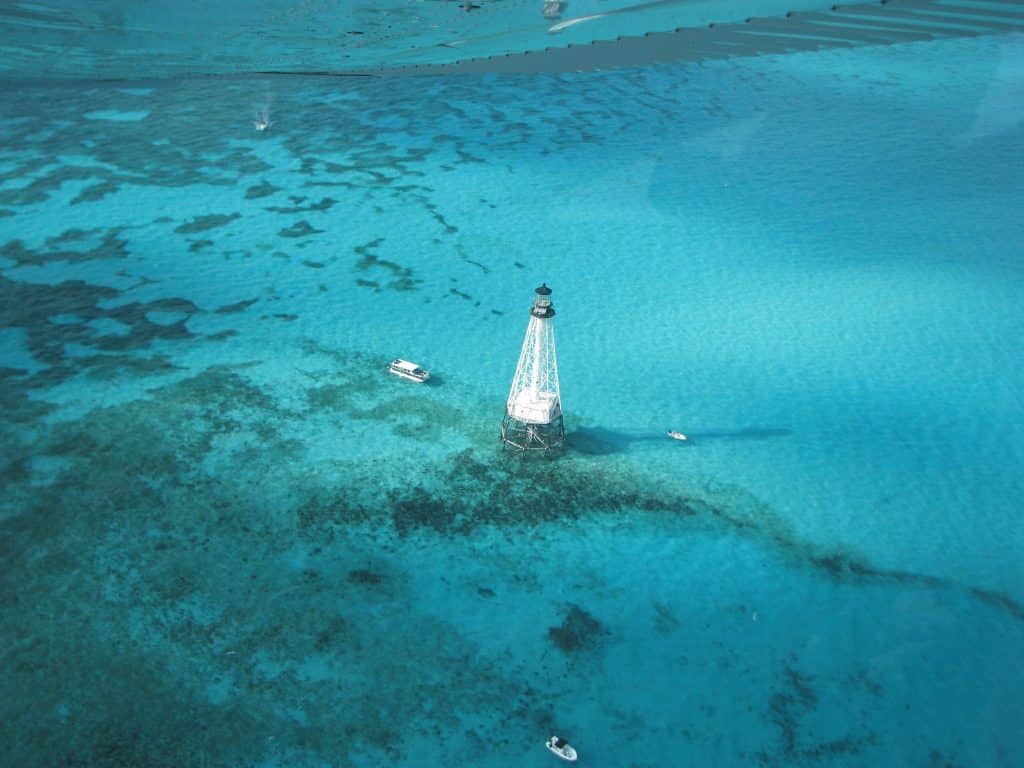
Cape Florida Lighthouse, Key Biscayne
This lighthouse is the oldest standing structure in the Miami area. Constructed in 1825, it was heavily damaged by a Seminole Indian attack a decade later, then rebuilt to a height of 95 feet and equipped with a more powerful light. Today, it sits within the grounds of Bill Baggs Cape Florida State Park at the end of Key Biscayne. A climb up the 112 steps leads to panoramic views including the Miami skyline. While the lighthouse is impressive and open to daily tours, it is the park itself that draws the visitors. Boaters come to picnic, anglers to cast lines from the seawall, and sunbathers to swim and enjoy one of the area’s finest beaches.
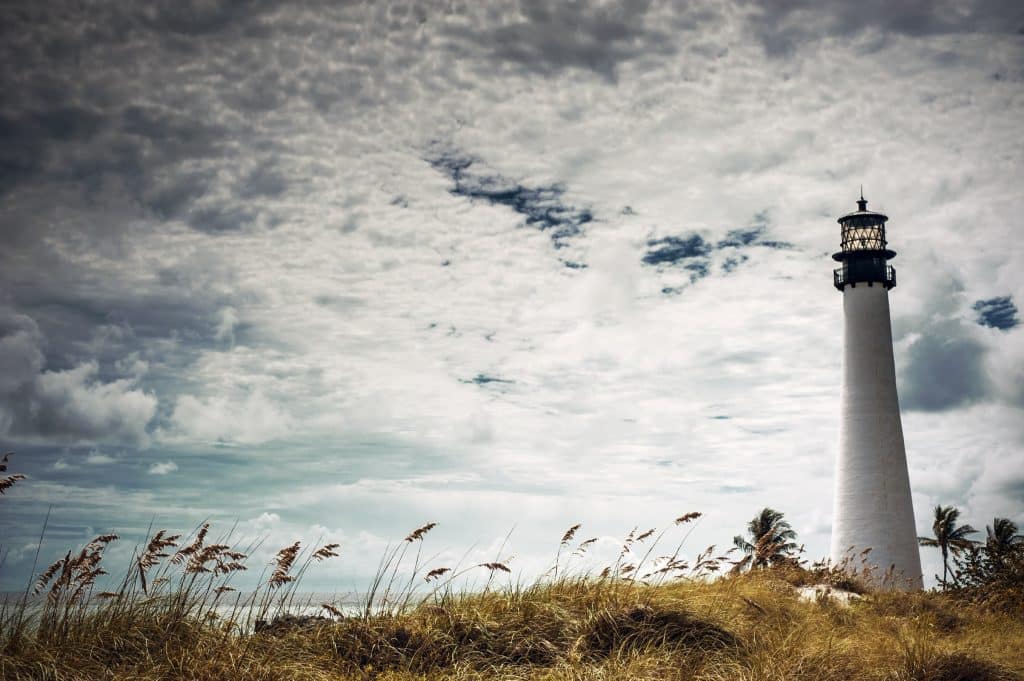
Jupiter Inlet Lighthouse, Jupiter
Sitting atop a natural sand dune where the Indian River meets the Atlantic Ocean, this 105-foot tower dates from 1860. The lighthouse remains in operation to this day and can be seen from as far as 25 miles at sea. The brick tower underwent renovations in 1999, including a conversion from bright red to its current brick red. The lighthouse has since become one of the area’s most recognized landmarks and stands along the 120-acre natural area popular for bird watching and hiking trails. Visitors climb 105 stairs that spiral counterclockwise around an iron column to gain panoramic views of the ocean and Intracoastal Waterway. Tour offerings include twilight yoga, and sunset and moonrise visits.
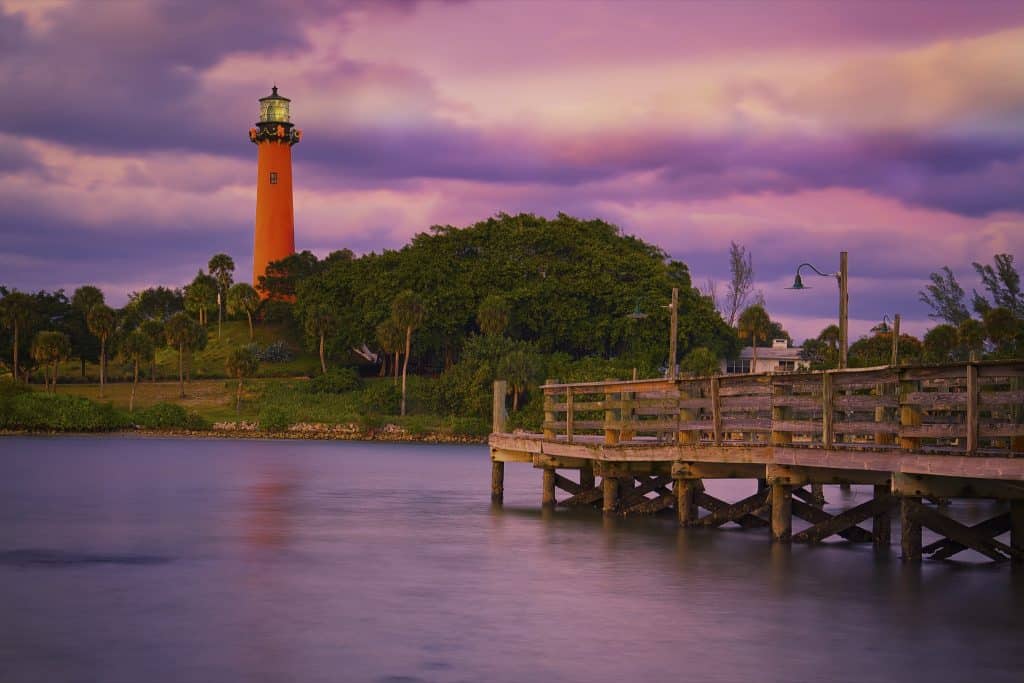
Key West Lighthouse, Key West
When Key West’s first lighthouse was destroyed in a massive hurricane in 1848, a 50-foot tower was built in its place. As the town’s trees and buildings grew taller, another 20 feet of height was added in the 1890s. Decommissioned by the Coast Guard in 1969, the Key West Lighthouse tower and its keeper’s dwelling are now a museum dedicated to Key West’s maritime heritage. While not the highest lighthouse in Florida it offers the best views of Key West. Visitors can climb the 88 steps for a bird’s eye view of the town, while the museum houses belongings, photographs, and paraphernalia of past keepers.
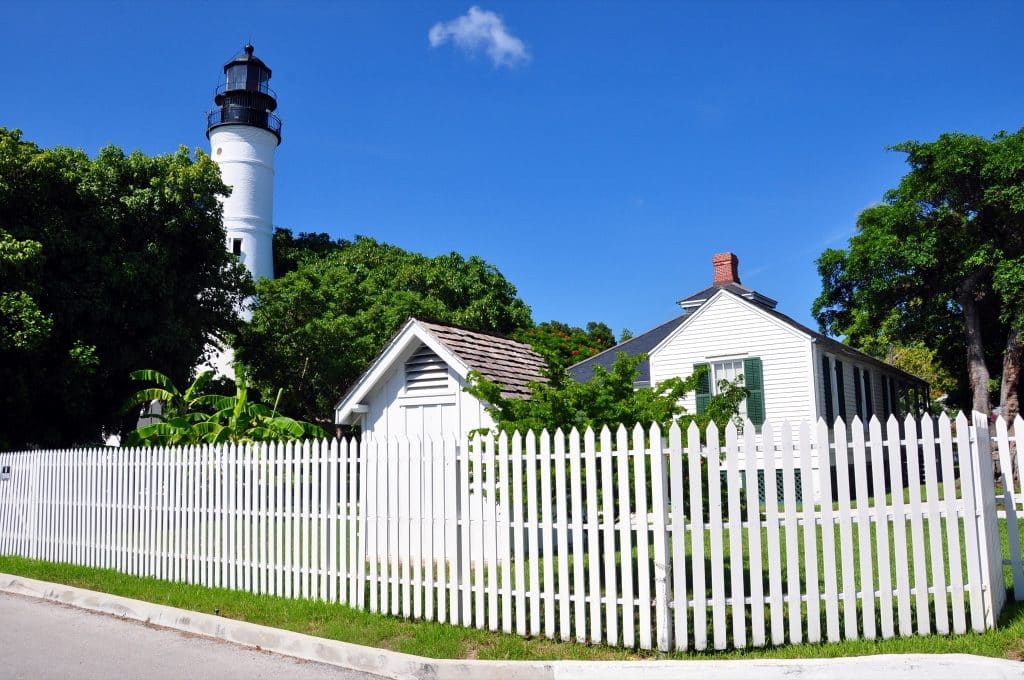
Sanibel Island Lighthouse, Sanibel Island
Sanibel Island’s most photographed landmark was almost lost before it was ever built, as the ship carrying iron girders used to construct the tower sank two miles offshore in Southwest Florida’s waters. Divers salvaged the wreck, and work on the 98-foot-tall structure was completed in 1884. Painted brown to resemble iron and featuring a skeletal design to help it withstand hurricanes, this lighthouse lacks the visual appeal of its more elegant and attractive counterparts. The beacon, which marks the entrance to San Carlos Bay, was eventually declared obsolete by the Coast Guard. Local efforts saved the light and accompanying keeper’s house from demolition, and in 2010, the City of Sanibel assumed ownership of the property and has since worked to preserve and restore the structure.
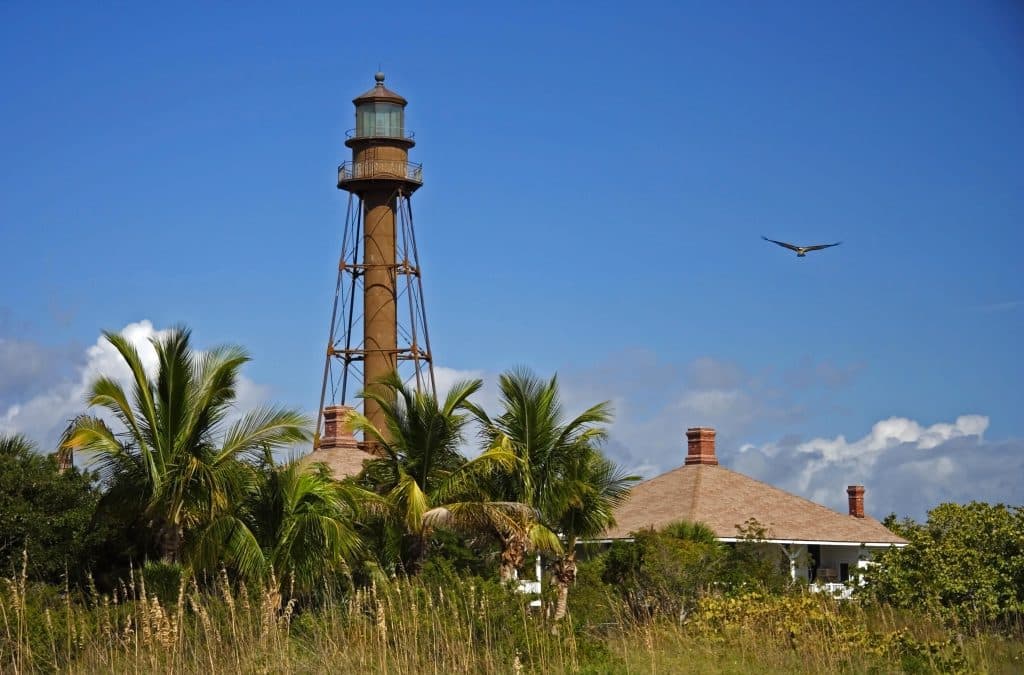
Hillsborough Inlet Lighthouse, Pompano Beach
Still in use as an aid to navigation, this 147-foot light tower emits 5.5 million candlepower, making it the most powerful light currently operating on the U.S. East Coast. Built in 1907, the light occupies the tip of a peninsula that is privately owned. There is no land access to the site, but it can be reached via boat tours offered by the Hillsborough Inlet Preservation Society. The grounds, which are maintained by the Coast Guard, include a number of historic wooden structures, but the highlight of the tour is the climb to the top offering breathtaking views once you reach the 175th step.
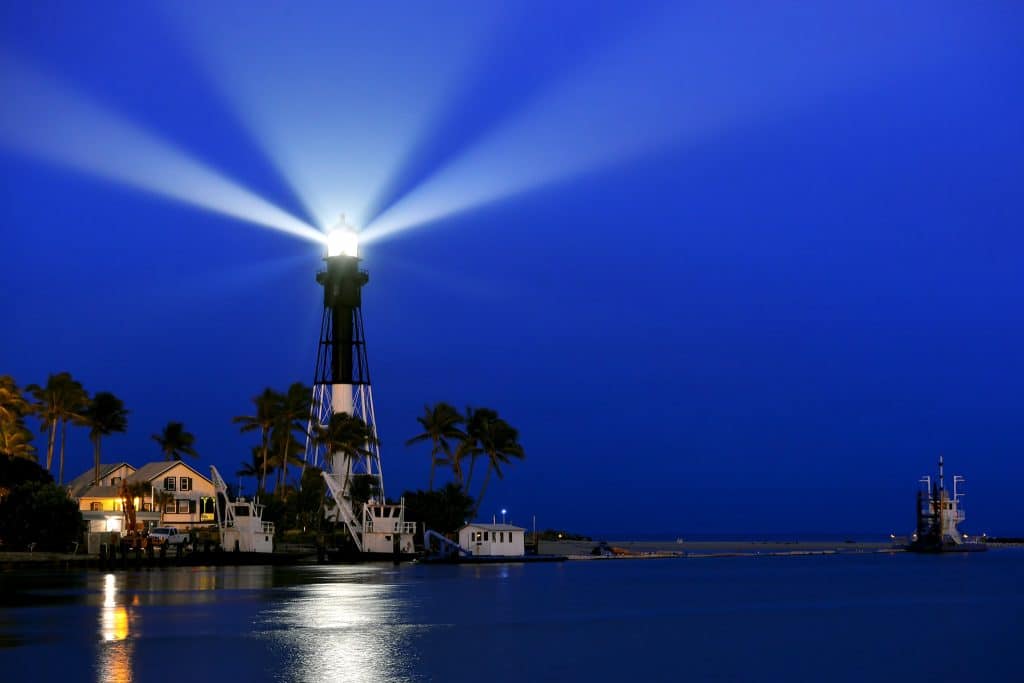
Loggerhead Lighthouse, Dry Tortugas
When a smaller lighthouse sitting atop the ramparts of Fort Jefferson proved inadequate for warning ships away from the shoaling waters of the Dry Tortugas, this larger and more powerful light was constructed on Loggerhead Key, some three miles to the west. Dating from the 1850s, it overlooks the area’s most dangerous reefs. The area’s sand and coral islands are famous for the abundance of sea turtles that nest there. Visitors arriving at the fort, which sits 70 miles off Key West, by boat or seaplane catch a glimpse of the tower on the horizon. There is no visitation to the site, which is automated and under the care of the National Park Service.
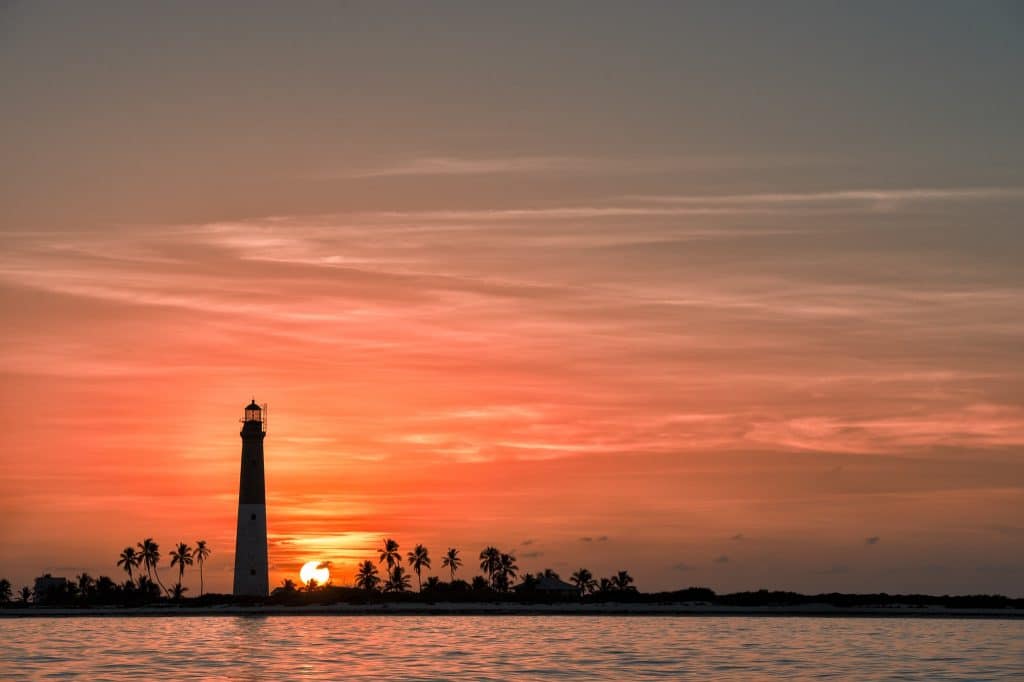
St. Augustine Lighthouse, St. Augustine
Dating from 1824, Florida’s first lighthouse occupied the same site as a watchtower built by the Spanish in the 1500s. Storm damage to the original tower led to the construction of the current structure in 1874. A walk through a wooded path takes you to the black and white spiral striped lighthouse. Visitors climb the 219 steps for a panoramic view of the Intracoastal Waterway, the Atlantic Ocean, and downtown St. Augustine from 165 feet above sea level. Visit during the dark of the moon for ghost stories and a paranormal tour of the tower and the keeper’s house; you might just meet the spirits of the light keepers who once protected the coast.
